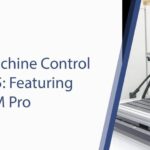Human–Machine Interface (HMI Design): Principles, Use Cases & Best Practices
Why HMI Design Matters
The Human–Machine Interface (HMI) is the critical touchpoint between people and machines—panels, touchscreens, dashboards, buttons, and controls that translate intent into safe, precise action.
As automation and digitization accelerate, thoughtful HMI design directly improves productivity, safety, and user satisfaction while reducing errors and downtime.
What Is an HMI?
An HMI is the interface layer—visual displays, touch inputs, hard keys, indicators, and control panels—that allows operators to monitor status, issue commands, and supervise complex systems.
You’ll find HMIs everywhere: consumer electronics, industrial automation, energy grids, transportation, healthcare devices, and more.
Where HMI Design Drives the Most Value
Industrial Automation
Well‑designed HMIs streamline workflows, surface real‑time telemetry (pressure, temperature, flow, voltage, switch/valve state), and simplify troubleshooting.
Clear states and guided procedures reduce training time, minimize operator fatigue, and shorten mean time to resolution (MTTR).
Consumer Electronics
Intuitive HMIs differentiate products.
Consistent patterns, responsive layouts, and meaningful feedback build trust and brand loyalty—users feel in control and are more likely to explore advanced features.
Healthcare & Medical Devices
Clarity is safety. Clean typography, high‑contrast alarms, and error‑proof inputs enable clinicians to act quickly and accurately.
Strong HMI design improves data capture quality and supports better patient outcomes.
Best Practices for Effective HMI Design
1) Start With Users (and Jobs-to-be-Done)
Identify operator roles, goals, environmental constraints (gloves, vibration, lighting), and critical tasks.
Map out the shortest, safest path to success.
2) Clear Visual Hierarchy
Use consistent layouts, recognizable icons, meaningful color coding, and progressive disclosure. Make primary actions obvious; de‑emphasize risky operations.
3) Consistency & Affordance
Controls should look and behave like controls. Keep interaction patterns uniform across screens to reduce cognitive load and training time.
4) Responsiveness & Accessibility
Design for different screen sizes/orientations and input modes (touch, rotary, physical keys). Ensure adequate target sizes, contrast, and readable type—accessible HMIs are safer HMIs.
5) Feedback, Alarms & Error Handling
Provide immediate, unambiguous feedback for inputs. Use tiered alarms (info/warn/critical), clear recovery steps, and confirmation for irreversible actions.
6) Performance & Reliability
Prioritize fast load times, smooth transitions, and resilient offline behavior. Critical controls must respond predictably—even under network or power instability.
7) Security & Safety by Design
Enforce role‑based permissions, logging, and secure communication. Separate “monitor” from “control” where appropriate; fail safe, not silent.
8) Usability Testing & Iteration
Validate with real operators early and often. Run scenario tests (startup, shift change, emergency stop, maintenance) and iterate on genuine pain points.
Quick Checklist (copy/paste)
- Clear primary action per screen
- Readable at 1m distance (typography/contrast)
- Consistent iconography & color meanings
- Latency under target thresholds
- Alarm tiers & recovery guidance
- Role‑based access + audit trail
- Offline/low‑bandwidth resilience
- Tested with real users in real environments

Future Trends in HMI
AR‑Assisted Interfaces
Overlay procedures, measurements, and alerts on the physical environment to reduce context switching and speed up maintenance.
Voice & Natural Language
Hands‑busy contexts benefit from voice commands for navigation and data entry—paired with visual confirmation for safety.
Adaptive, AI‑Driven UX
Interfaces that learn operator preferences and predict next steps can pre‑stage controls, highlight likely faults, and personalize dashboards.
Interoperability at the Edge
Standards‑based connectivity (e.g., OPC UA/MQTT) and edge processing enable faster feedback loops and scalable multi‑machine supervision.
Radonix Expertise in HMI & CNC Control
Backed by 16+ years of experience in CNC system design, Radonix is among the few companies in the Middle East with advanced CNC industrial controller technology.
Our platforms power the control layer of numerous CNC systems domestically and abroad—prioritizing reliability, safety, and operator‑friendly UX.
Contact
info@radonix.com
+90 553 920 5500
FAQ
What’s the difference between HMI and SCADA?
HMI is the local interface for viewing and controlling a machine. SCADA supervises multiple assets, providing centralized monitoring, data logging, and control across sites.
How often should an HMI be updated? Review quarterly for usability, accessibility, and security. Update alongside firmware/software releases, or when workflows, standards, or safety requirements change.
Do I need a PLC for an HMI?
Many industrial HMIs communicate with PLCs, motion controllers, and drives. The HMI presents data and controls; the PLC executes real‑time logic.
How does HMI design improve safety?
Consistent alarms, clear states, lockouts for dangerous actions, and role‑based access reduce errors and speed up the right response.








